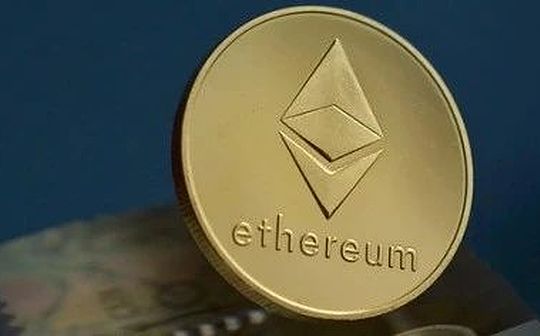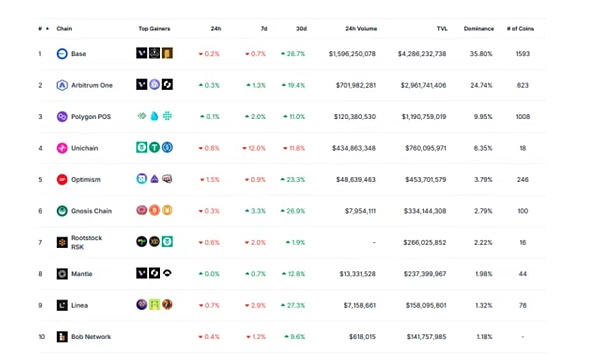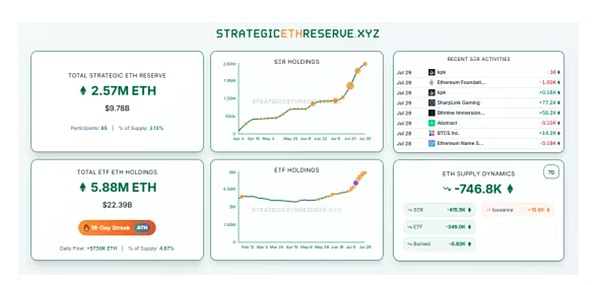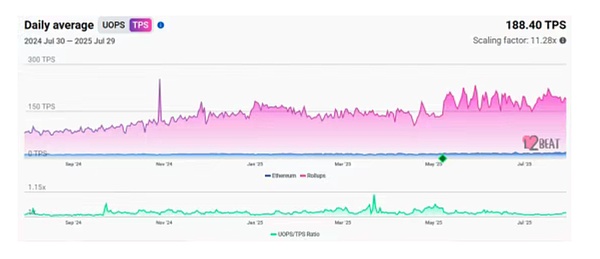
Ethereum has been 10 years since its main network was launched on July 30, 2015 to July 30, 2025.
Compared with the decade of Bitcoin and the decade of Ethereum, there may be more mixed feelings for people in the currency circle.If Bitcoin is the key to cryptocurrency, then Ethereum must be the industry’s weather vane.For this reason, Ethereum, which is the main carrier of encryption applications, has a much more impact than the repeated leaps in paper prices, but is reflected in the rise and fall of the industry development.In other words, compared to Bitcoin’s “HOLD”, in Ethereum, “BUILD” is the core.
The dream boat of the world computer has sailed and has developed to this day, and has become a huge giant that is difficult to fall.Looking back on the past ten years, it may not be Ethereum that has grown, but also all the people in the currency circle who have risen and fallen here.
The journey begins: Creation, Hard Fork and ICO
Turn the pointer to 2011.At that time, Vitalik Buterin was just an ordinary and ordinary 17-year-old Russian-Canadian boy. Like many ordinary boys, he happily found a job and wrote articles for a website called “Bitcoin Weekly”. Each article was paid for 5 bitcoins.
From a contributor to the founder of Bitcoin Magazine, Vitalik seems to have begun to miss the identity of a developer.Two years later, just as the market was immersed in the thunder of Bitcoin, the teenager had a sudden idea during his trip to San Francisco. What would happen if he developed a programmable blockchain network?In fact, at the beginning, Vitalik did not intend to develop a new platform, but wrote letters to the core developers of Bitcoin many times, but after the emails fell into the sea, this idea that was quite crazy at the time quickly occupied his brain.
Execution is the ladder to promote human progress.Although he had only a golden idea, Vitalik quickly completed the first draft of the Ethereum white paper and shared this idea with his friends via email.The plan that thought it would be cursed by Bitcoin enthusiasts was unexpectedly recognized by peers, and soon, like-minded people began to gather.
Vitalik initially chose five Lianchuang. In addition to himself, there were Anthony Di Iorio, Charles Hoskinson, Mihai Alisie and Amir Chetrit. In the early 2014, three developers including Joseph Lubin, Gavin Wood and Jeffrey Wilcke joined. At this point, the founding team, which was nicknamed the “Eight Kings” by the market, was officially established.
The spark of technology also began to ignite from now on.
2014 was a very collapsed year for the currency circle. The Mentougou incident once collapsed the belief in Bitcoin, and the value of cryptocurrencies was severely questioned.It was also this year that idealist Vitalik encountered the first value problem in his life.
Eight-bit Lianchuang debates about the future of Ethereum. One group believes that it should take the Silicon Valley route, invest in venture capital, and transform into enterprises, while the other group firmly adheres to the ideal of decentralization and believes that only non-profits can realize their true beliefs.As we all know, Vitalik chose a non-profit route, which also caused the Lianchuang to fall apart. By the end of the year, there were only four members who were still alive, Vitalik Buterin, Gavin Wood, Mihai Alisie and Jeffrey Wilcke. After 16 years, all Lianchuang left one after another, either in personal affairs or out of disagreement of ideas.
But no matter what, there are still many people who are willing to pay for their dreams. In their first ICO in July 2014, Ethereum won a great victory, raising more than 30,000 bitcoins in just 42 days. With a market value of approximately US$18 million at the time, a total of 72 million ETHs were issued, with an average price of US$0.3.
A year later, on July 30, 2015, as the block height reached the preset 1028201, the Ethereum main network was launched, opening the prelude to the world’s computers.Although the goal is great, at that time, Ethereum was just a display platform, and the applications it could run were extremely limited. Sometimes transactions could be more than one hour difficult to chain. The programming and security of contracts were more like a joke, relying heavily on manpower to control it.
Because of this, less than a month after the launch of the “The DAO” in 2016, a hacker took advantage of the reentrancy Attack vulnerability in The DAO smart contract and successfully stole 3.6 million ETH, directly taking out one-third of the $150 million crowdfunding amount.This incident once again made the belief in code, law, and the community debated over the issue of rollback or not. Vitalik finally firmly forks, and Ethereum Classic was born.
2017 was the year when Ethereum became popular.ICO has ushered in explosive growth this year, with projects such as EOS, Tezos, Filecoin, etc. emerging, and a magical narrative that can get billions of dollars in just one white paper is truly staged.In the era of selling dreams, Ethereum has also been growing in a coordinated manner. According to data, this year, more than 50,000 ERC-20 token contracts were deployed on the Ethereum network, raising more than US$4 billion.From the price point of view, Ethereum has risen from US$8 at the beginning of the year to US$700 at the end of the year. The Ethereum application ecosystem has grown and grown, and the name of infrastructure has been deeply rooted in people’s hearts.However, the flowers are not popular for a hundred days, and the chaos in the currency circle quickly attracted the attention of regulators. 9.4 suddenly arrived, and the ICO dream broke. By the end of 2018, the high point of ETH price fell by more than 90%. The former praise turned into inner dissatisfaction. Network congestion and high handling fees became problems of Ethereum being attacked.

The breakdown of economic benefits has become a nutrient for technicians.Developers with dreams began to focus on researching technology during the bear market from 2018 to 2019. Byzantium fork, Constantinople fork, and Istanbul fork continued to be updated. Rollup also stood on the stage of history, solving Ethereum’s bottleneck in data availability to a certain extent, laying the foundation for the subsequent Ethereum application outbreak.
Climaxes: Defi, NFT and newcrisis
With a little unwilling ambition, Ethereum finally ushered in its highlight moment.
In 2020, Defi summer was ignited by Compound, and the wind of liquidity mining spread throughout the currency circle. DEX, lending, synthetic assets, and insurance agreements sprung up like mushrooms after a rain. Ethereum TVL surged from US$2 billion at the beginning of the year to US$16 billion at the end of the year, a surge of 8 times.We have to admit that doing finance seems to allow the market to see the dawn of hope better than computers in the world.But the problem also arises. Ethereum, which is increasingly congested, cannot wait for a perfect solution. Layer 2 became the most feasible route at that time.The system upgrade also helped Layer2’s success. In December 2020, Beacon Chain was officially launched, which was one of the important turning points of Ethereum and the effect was immediately effective. Within one month after it was launched, 520,000 ETH were successfully pledged.This also laid hidden dangers for the subsequent sovereignty battle.
In the following 2021, Ethereum will launch a large-scale application.NFT fanaticism has emerged, and small pictures have brought the cryptocurrency to all parts of the world. Perhaps everyone still doesn’t know what ERC-721 is, and digital art has not yet had time to show its true appearance, but the hustle and bustle of hype has arrived. NFT trading platforms such as OpenSea, Rarible, and Foundation have risen, with the monthly transaction volume of NFT reaching a maximum of US$12.6 billion.Gas fees have become the focus again. In August 2021, EIP-1559 upgraded and implemented a basic fee combustion mechanism. The deflation made holders cheer, and the price of ETH also rose, soaring to a high of $4,900.

2022 is a year of darkness in the currency circle. The collapse of Terra and FTX made the market unexpected. Bitcoin and Ethereum were like a roller coaster ride, and the entire crypto world entered the good night silently.But technology is not about price, and Ethereum’s roadmap will not be shaken by price.On September 15, 2022, Ethereum officially completed the merger of the main network and the beacon chain (The Merge), marking that Ethereum has truly switched from POW to POS, miners retreated greatly, and stakers replaced it as the center of voice.
But from this moment on, Layer2 brought new troubles to Ethereum.Layer2 relies on Ethereum to execute transactions, but it does not bring corresponding revenue to Ethereum. It uses the sharp decline in main chain revenue as a trade-off to obtain value, and even has a negative impact on the mechanism. For example, Rollup, the main technical path in daily trading use, has allowed ETH to avoid inflation through the mechanism to appear again.Against this background, Layer2’s rise is undoubtedly an infringement of Ethereum’s sovereignty, and has been criticized by many Ethereum supporters.Based on a simple data, just one chain of Base snatched more than $40 billion in market value from Ethereum.

In this context, does the inevitability of trading on Ethereum still exist?This is a question that Ethereum needs to be considered in the new stage, but in any case, although it is suspected of self-sacrificing, the transformation of this trading mechanism actually reflects the migration of Ethereum’s values, from one point to multiple poles, from single combat to harmonious coexistence, Ethereum’s technological philosophy is still evolving.
Starting from 2023, ETH’s price performance has been sluggish.It was also from this year that the once-promoted “Ethereum killers” began to flee from Ethereum, looking for differentiated positioning, and thus rebuilding the “Hundred Chain War”.Solana rebounded after being on the verge of despair, using “MEME” as a starting point to return to the top. BNB is backed by Binance Ecosystem to enjoy the cool breeze, and Aptos and Sui are focusing on institutional-level markets.In sharp contrast, there are many different opinions on the future of Ethereum. The mid-life crisis of Ethereum is rampant. From the incremental market to the stock climb, there is no longer the shade of rapid growth. Governance, a mechanism that once had insignificant markets, has finally begun to attract public attention.The ethereum foundation’s oral punishments followed one after another and reached its peak in 2024.
Perhaps even the Foundation itself did not expect that an ordinary selling of coins would trigger such a big tsunami of public opinion.On August 23, 2024, the Ethereum Foundation address transferred 35,000 ETH into Kraken.The market quickly accused the foundation of frequent coins selling has negative effects, and the vague budget has increased people’s suspicion. The foundation has been listed for six crimes, and former executive director Aya Miyaguchi was directly pointed out that it was a place to eat. At the time of the worst public opinion, the woman even received a death threat.This made Vitalik very dissatisfied. Not only did he support Aya on social media, but he also posted “crazy words” that caused ridicule by “thinking to leave Ethereum”.
Now in progress: Ethereum’s change and unchanging
But it was also this year that institutional narrative took over Ethereum’s technology and application narrative and became a new ETH growth pole.On July 23, 2024, the US SEC approved the Ethereum spot ETF application from 8 issuers. The securities theory was self-defeating. Ethereum was completely clear and officially came to the embrace of Wall Street.The theory of exchange of dealers was born, and ETH was shifting from retail holders to institutional holders.According to existing data, the issuer of Ethereum spot ETF net holdings exceed 5.88 million ETH, with a value of US$22.39 billion, accounting for about 4.87% of Ethereum’s market value.Among them, BlackRock holds the largest number, with more than 2.46 million pieces, accounting for nearly half of the total.In other words, BlackRock investors have become Ethereum’s largest institutional dealer.

In 2025, Ethereum, which has been silent for a long time, was awakened by capital drive.If we look back from the future to the present, 2025 may be the first year of Ethereum’s institutions.ETH officially joined the crypto reserve narrative. SharpLink Gaming, BitMine, Bit Digital, BTCS, GameSquare and other institutions have deployed Ethereum vaults. According to Strategic ETH Reserve data, there are 66 entities holding more than 100 ETHs, with a total of more than 2.47 million ETHs, worth US$9.78 billion, equivalent to 43.70% of the overall scale of ETH ETFs.

The time point has finally come from the past to the present, and the changes in Ethereum are gradually becoming clearer.From a technical perspective, Ethereum’s criticized TPS has increased by more than 10 times from 15/s to 194/s, with an efficiency of more than 10 times; from a price perspective, ETH has increased from US$0.5 to US$3,800, a surge of 7,600 times; Ethereum’s application is no longer limited to simple voting Dmo, but covers a wide range of fields such as Defi, NFT, gaming, and insurance. More than 1.1 million validators and 3.6 million ETH have been locked for pledge, and the total TVL has entered US$81.4 billion from US$520,000 to US$81.4 billion, with a soaring order of magnitude, with a market share of 59.9%. It is a well-deserved leading public chain in the market.Even the foundation is changing dramatically. In March 2025, Aya Miyaguchi became the chairman of the foundation, but no longer held daily management positions. Two core developers, Hsiao-Wei Wang and Tomasz Stańczak, replaced her, which was the beginning of governance change.

There are also unchanging points in the change.From 17 to 31, Vitalik Buterin is still the soul of Ethereum.Even though sovereignty is already being transferred to Wall Street, even if there is a constant choice between lofty ideals and survival reality, even if we rely on so-called institutional pull-up to achieve currency price growth, even if the best narrative is RWA and Payfi integrated into the traditional financial system, Ethereum has its own unchanging core, and it still represents the most decentralized future.Ethereum, which has more than 250,000 developers and researchers, is still one of the most decentralized blockchain development communities. When everyone mentions technology and ideals, Ethereum is also mentioned the most.
There are many unanswered questions.Where is Ethereum governance going?How to deal with the impact of Layer2?Where is the new application direction?Can account abstraction be realized?Will Ethereum be more open or more closed?
Ethereum is about to move towards the next decade, and this dream-making journey is far from over.







